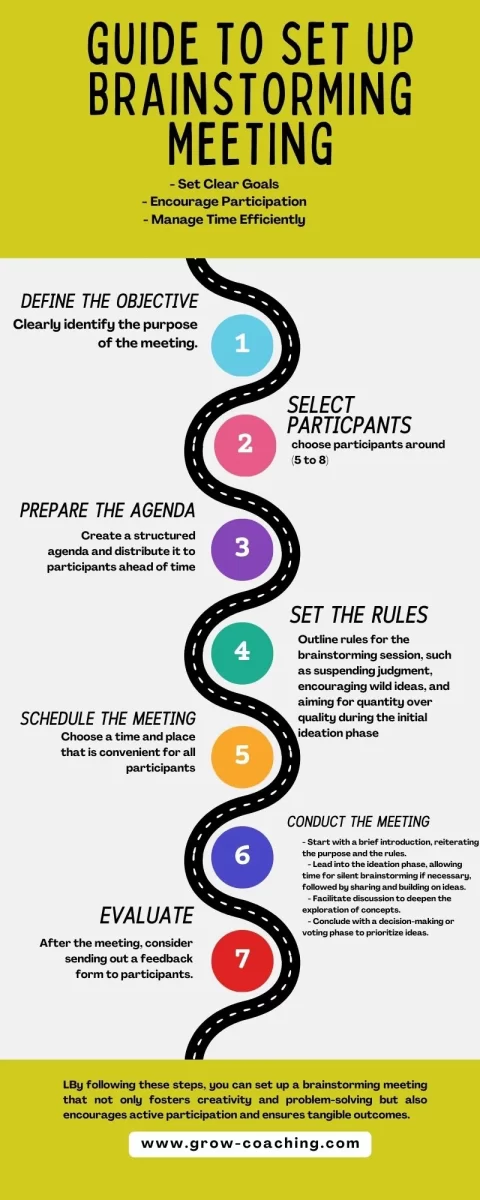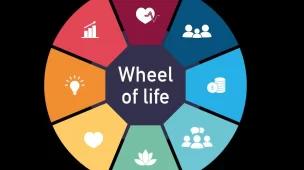Imagine a world where the lightbulb was never invented and where the concept of the World Wide Web remained a figment of science fiction. These breakthroughs began as mere ideas, sprouting in the fertile grounds of creative brainstorming sessions. Statistics reveal that companies that embrace regular brainstorming boost their innovation output by 300% compared to those that don’t. This is the power of brainstorming—a dynamic, collective effort that turns rudimentary thoughts into revolutionary outcomes.
What is Brainstorming?
Brainstorming is a methodical approach to spur innovation and solve problems by generating a plethora of ideas in a free-flowing, non-judgmental environment. Developed in the 1930s by advertising executive Alex Osborn, brainstorming has evolved but retains two core principles: quantity breeds quality, and all criticisms are withheld during the ideation phase. This ensures that creativity is not stifled by fear of judgment, allowing every participant to contribute fearlessly.
The Power of Brainstorming
For individuals and teams alike, brainstorming is more than a mere exercise in creativity. It is a strategic tool that enhances problem-solving capabilities, fosters a culture of collaboration, and strengthens bonds within teams. By engaging diverse perspectives, brainstorming sessions often lead to unique solutions that would likely remain undiscovered in solitary thinking environments.
Advanced Brainstorming Techniques
To maximize the effectiveness of brainstorming sessions, several techniques have been developed:
– Mind Mapping: A visual tool that starts with a central idea and expands outwards to explore different solutions, allowing a natural flow of thoughts.
– Brainwriting: An alternative to traditional brainstorming where participants write ideas on cards, which are then passed around for others to build upon, enhancing idea generation without the pressure of speaking up.
– SCAMPER Method: This technique involves seven different approaches (Substitute, Combine, Adapt, Modify, Put to other uses, Eliminate, and Reverse) to modify existing ideas and create new ones.
Each method serves different purposes and can be tailored depending on the session’s goals and the team’s composition.

Virtual Brainstorming: Navigating the New Normal
With the rise of remote work, virtual brainstorming has become essential. Effective virtual brainstorming requires tools that foster real-time collaboration and creativity across distances. Platforms like Miro offer digital whiteboards that replicate the interactive experience of in-person sessions. Best practices for virtual brainstorming include using engaging visuals, ensuring all participants have access to digital tools, and maintaining clear communication to keep everyone aligned.
Pro Tips for Effective Brainstorming
To conduct a successful brainstorming session, consider the following tips:
– Set Clear Goals: Define what you hope to achieve from the session to keep the group focused.
– Encourage Participation: Ensure that all participants feel comfortable sharing their ideas, fostering a truly inclusive environment.
– Manage Time Efficiently: Keep the session dynamic and time-boxed to maintain energy and focus.
Setting up an effective brainstorming meeting involves careful planning and consideration to ensure it is productive and that participants are engaged. Here’s a general guide on how to set up a brainstorming meeting to discuss any matter:
- Define the Objective
– Clearly identify the purpose of the meeting. What specific problem needs to be solved or what idea needs to be developed? Having a clear goal will focus the discussion and ensure the outcomes are relevant.
- Select Participants
– Choose participants who can contribute diverse perspectives to the topic. This often includes people from different departments or with varied expertise. Ideally, keep the group size manageable (around 5-8 participants) to allow everyone a chance to contribute.
- Choose a Facilitator
– Appoint a neutral facilitator who can guide the discussion, encourage participation, and keep the meeting on track. The facilitator should be skilled in managing group dynamics and ensuring a productive environment.
- Prepare the Agenda
– Create a structured agenda and distribute it to participants ahead of time. The agenda should include:
– The meeting’s objective.
– A brief background on the issue.
– Time allocated for each phase of the brainstorming session.
– Any pre-meeting preparation required.
- Set the Rules
– Outline rules for the brainstorming session, such as suspending judgment, encouraging wild ideas, and aiming for quantity over quality during the initial ideation phase. Make sure to emphasize that all contributions are valued.
- Gather Materials
– Ensure you have all necessary materials, such as whiteboards, markers, sticky notes, flip charts, or digital tools like collaborative online whiteboards if the meeting is virtual.
- Schedule the Meeting
– Choose a time and place that is convenient for all participants. Consider a comfortable venue that encourages relaxed and open conversation. For virtual meetings, ensure everyone has access to the required technology and that it works properly.
- Conduct the Meeting
– Start with a brief introduction, reiterating the purpose and the rules.
– Lead into the ideation phase, allowing time for silent brainstorming if necessary, followed by sharing and building on ideas.
– Facilitate discussion to deepen the exploration of concepts.
– Conclude with a decision-making or voting phase to prioritize ideas.
- Document Results
– Ensure that all ideas and discussions are recorded. This can be done by the facilitator or an appointed note-taker. The documentation should capture all the ideas generated, any decisions made, and actions agreed upon.
- Follow-Up
– After the meeting, distribute the notes to all participants and relevant stakeholders. Set up a follow-up meeting to review progress on actions taken or to further refine ideas if necessary.
- Evaluate
– After the meeting, consider sending out a feedback form to participants. Ask about what went well and what could be improved. This will help enhance the effectiveness of future brainstorming sessions.
By following these steps, you can set up a brainstorming meeting that not only fosters creativity and problem-solving but also encourages active participation and ensures tangible outcomes.
Conclusion: Embrace the Creative Challenge
Brainstorming is not just a technique but a mindset. By cultivating an environment where ideas can burgeon without restraint, you unlock the potential of your team. Challenge your team to regular brainstorming sessions and watch as the seeds of their ideas blossom into innovations that could redefine your industry. Share your successes and learn from each session, continuously evolving your approach to creativity.
Setting up an effective brainstorming meeting involves careful planning and consideration to ensure it is productive and that participants are engaged.

The Money Wave Review: Audio Program
Join us for a deep dive into The Money Wave REVIEW, where we’ll provide an objective review of this manifestation program. In this event, we’ll

Superintelligence Summary by Nick Bostrom
Nick Bostrom’s “Superintelligence: Paths, Dangers, Strategies” critically explores the emergence, control, and development of artificial intelligence (AI) systems that may soon surpass human intelligence in











